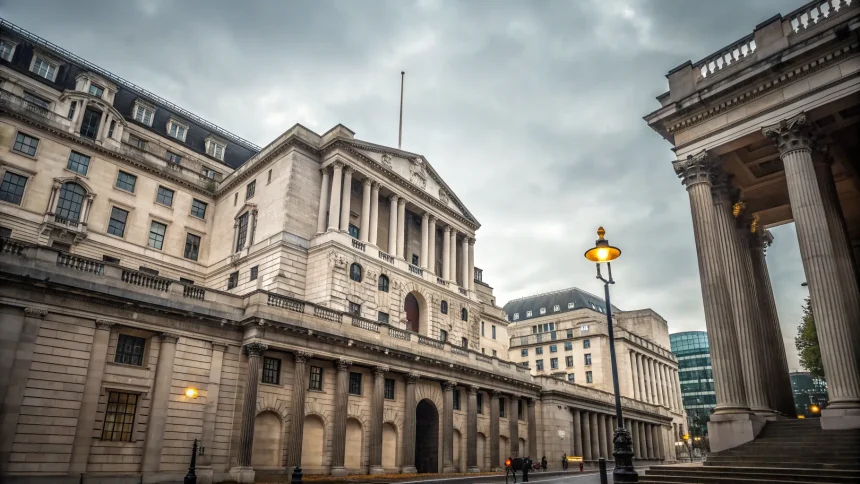The Bank of England has reduced its key interest rate to 4%, marking the fifth consecutive rate cut since August of last year. This latest monetary policy decision continues the central bank’s easing cycle as it responds to changing economic conditions.
The move follows a series of similar reductions that began in the latter half of last year, indicating a sustained shift in the UK’s monetary policy stance. The central bank’s decision affects millions of borrowers and savers across the United Kingdom, with implications for mortgage holders, businesses seeking loans, and consumers.
Recent Rate Cut Trajectory
Since initiating its rate-cutting cycle in August last year, the Bank of England has steadily lowered borrowing costs. This latest reduction to 4% represents a significant change from the peak rates seen during the post-pandemic inflation surge.
The series of five consecutive rate cuts demonstrates the central bank’s commitment to adjusting monetary policy in response to economic indicators. Financial analysts note that this pattern of reductions suggests the Monetary Policy Committee has gained confidence that inflation pressures have eased sufficiently to allow for more accommodative policy.
Economic Implications
The rate cut is expected to have several effects on the UK economy:
- Lower borrowing costs for businesses, potentially stimulating investment
- Reduced mortgage payments for homeowners with variable rate loans
- Decreased returns for savers with interest-bearing accounts
- Possible stimulus to consumer spending as debt servicing costs decline
For mortgage holders, particularly those on tracker or variable rate products, the reduction translates to lower monthly payments. First-time buyers may also benefit from improved affordability conditions in the housing market.
Business leaders have generally welcomed the move, with many citing the potential for reduced financing costs to support growth plans that had been put on hold during the higher interest rate environment.
Global Context
The Bank of England’s decision aligns with actions taken by other major central banks. Many monetary authorities worldwide have begun easing policy as global inflation pressures have moderated from their post-pandemic peaks.
The UK’s approach mirrors similar policy shifts seen in other economies, though the timing and pace of rate cuts vary across different regions based on their specific economic conditions and inflation outlooks.
Financial markets had largely anticipated this move, with bond yields and the pound sterling adjusting in the days leading up to the announcement. Currency traders will be watching closely for any signals about the future path of interest rates.
Future Outlook
Economists are now focusing on whether the Bank of England will continue its easing cycle in the coming months. The central bank’s decision will likely depend on upcoming economic data, particularly inflation figures and employment statistics.
“The key question now is whether we’ll see the pace of cuts accelerate or slow down,” noted a senior economist at a major UK financial institution. “Much depends on whether inflation continues to move toward the Bank’s 2% target.”
Businesses and households are adjusting their financial plans in light of the changing interest rate environment, with many expecting borrowing costs to continue declining, albeit at a measured pace.
As the Bank of England navigates this easing cycle, market participants will be paying close attention to statements from Monetary Policy Committee members for clues about the timing and extent of any future rate adjustments.









